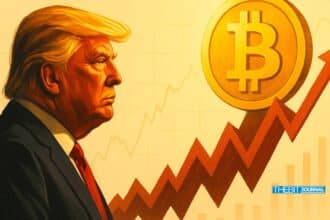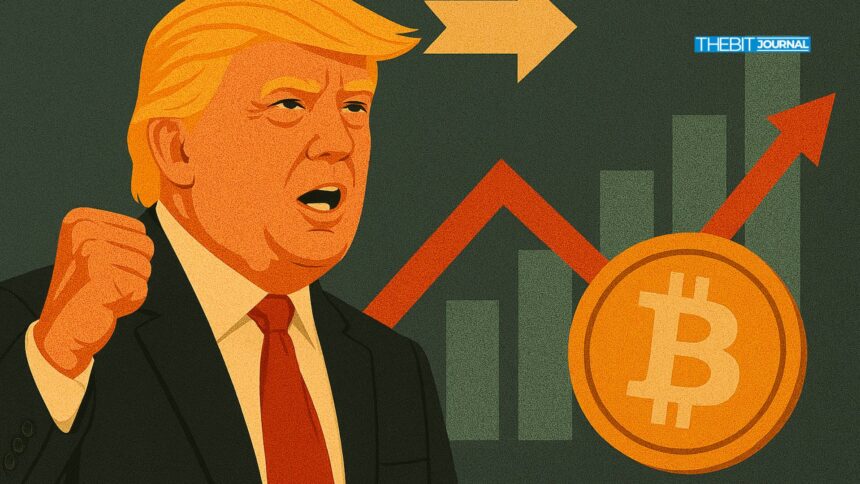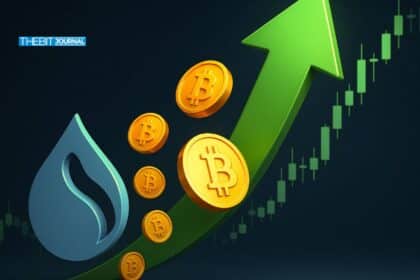The cryptocurrency market has been hit by turbulence following U.S. President Donald Trump’s announcement of a national emergency and the imposition of broad tariffs on all foreign countries. While the news initially generated optimism due to the imposition of a 10% base tariff, the mood quickly shifted as more specifics were revealed, driving a sharp market decline.
Key Developments, Tariff Details, and Market Reaction
Starting April 5, the U.S. will apply a 10% tariff to all nations, with some countries, including China, facing even steeper rates—34%, while the EU and Japan are set to face 20% and 24%, respectively. In a statement from the White House Rose Garden, President Trump defended the tariffs, claiming that the U.S. was simply levying tariffs at half the rate that other nations impose on American goods.

Crypto prices, which had been rallying in recent days, dropped significantly in response. Bitcoin, once reaching a high of $88,500, fell by 2.6%, dipping to $82,876, while Ethereum saw a similar decline, dropping more than 6% from $1,934 to $1,797.
The Role of Certainty in Market Volatility
David Hernandez, a crypto investment expert at 21Shares, explained that while the announcement caused volatility, it also provided clarity. “Markets thrive on certainty,” he noted, suggesting that institutional investors may step in to capitalize on the lower prices.
Hernandez also highlighted that the next moves in the market would depend on how other nations respond. He speculated that countries like Mexico, China, South Korea, and Japan might consider countermeasures, which could further stir market volatility.
U.S. Tax Cuts and Government Efficiency Push
President Trump also outlined his plan for the largest tax cuts in history while assuring that essential social programs like Medicare and Social Security would remain unaffected. While the specifics of these tax cuts remain unclear, further details are expected to emerge in the coming weeks.
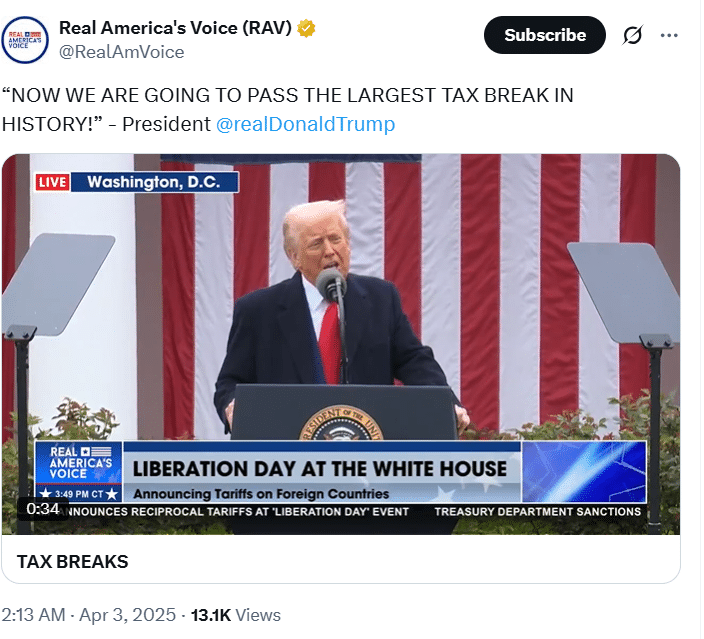
In tandem with this, the Department of Government Efficiency (DOGE), led by Elon Musk, is pushing for aggressive cost-cutting measures across federal agencies. Critics argue that this may affect vital programs, raising concerns about future cuts to Social Security and Medicare.
Crypto Market Reacts to Fear and Uncertainty
The crypto market, as a whole, experienced a significant downturn, with the total market capitalization falling by 5.3%, bringing it to $2.7 trillion. The Crypto Fear & Greed Index dropped sharply to 25, reflecting the widespread fear and uncertainty among investors.
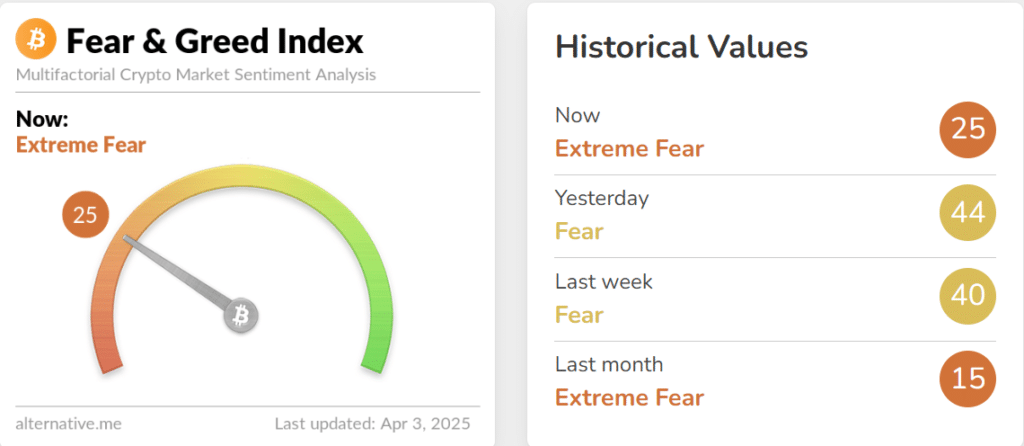
Why Trump’s Tariffs Could Spark a Digital Asset Surge
However, growing evidence suggests that this economic disruption could actually favor crypto in the long run. Historically, geopolitical and macroeconomic instability, such as during the 2019 U.S.-China trade war, has driven demand for Bitcoin, which surged from $5,200 to over $12,000 as investors sought a hedge against fiat uncertainty.
Today, the same pattern is reemerging: the S&P 500 lost $2 trillion in value, the Crypto Fear & Greed Index plunged to 25, and yet institutional interest in Bitcoin is showing signs of steady accumulation, according to on-chain data from Glassnode. Cryptocurrencies like Bitcoin and Ethereum are increasingly seen as non-sovereign, inflation-resistant stores of value, particularly as national currencies face devaluation risks due to disrupted trade flows.
Investment expert David Hernandez from 21Shares noted that markets thrive on clarity—even turbulent ones—as they push investors to reposition assets into alternatives like crypto, which offer immunity from centralized monetary manipulation. In parallel, countries under tariff pressure may accelerate blockchain innovation and digital currency adoption to reduce reliance on U.S.-dominated financial systems—a trend already cited by the IMF and World Bank as a geopolitical driver of decentralized finance.
In essence, while Trump’s tariffs have triggered short-term volatility, they may also act as a long-term catalyst that reinforces the relevance and resilience of cryptocurrencies in a world seeking financial sovereignty and technological alternatives to fiat dependence.
Price Recovery and Investor Sentiment
However, following the sharp decline, a slight recovery occurred. Bitcoin regained 0.8%, climbing to $83,205, while Ethereum saw a 1.2% increase to $1,810. Despite the recovery, traders remain cautious, with trading volumes surging by 46% as investors rushed to reposition themselves.
Stock Markets Also Hit
The broader stock markets were not spared, as the S&P 500 lost a staggering $2 trillion in market value. The market downturn has triggered concerns about the long-term impact of these economic decisions.
Conclusion
The crypto market is currently navigating a period of significant uncertainty, heavily influenced by political and economic factors. While there has been some recovery in prices following the initial dip, volatility remains high, and investor sentiment is fragile. The key to stability in the coming weeks will lie in the responses from other nations, particularly those facing the highest tariffs.
Retaliatory measures from countries such as China or the EU could further destabilize the market, whereas clarity on tax cuts and government efficiency reforms could provide some much-needed reassurance. As the situation develops, the crypto market is expected to remain highly reactive to any new political or economic announcements.
Follow us on Twitter and LinkedIn and join our Telegram channel to be instantly informed about breaking news!
Frequently Asked Questions
1- What caused the crypto market downturn?
The sharp decline in crypto prices was triggered by U.S. President Trump’s announcement of tariffs and a national emergency.
2- How have tariffs affected Bitcoin and Ethereum prices?
Bitcoin and Ethereum both saw significant drops in value due to market uncertainty following the tariff announcement.
3- Is the crypto market likely to recover soon?
While some recovery has been seen, market volatility remains high, and further responses from other countries could influence the outcome.
4- What role does investor sentiment play in the current market?
Investor sentiment, driven by fear and uncertainty, has led to heightened market volatility and cautious trading.
Appendix: Glossary of Key Terms
Tariff – A tax or duty imposed by a government on imported or exported goods.
Crypto Market Capitalization – The total value of all cryptocurrencies combined, calculated by multiplying the current price by the total supply.
Bitcoin (BTC) – A decentralized digital currency, considered the first cryptocurrency, that uses blockchain technology.
Ethereum (ETH) – A blockchain-based platform that enables the creation of smart contracts and decentralized applications (dApps), along with its native cryptocurrency.
Crypto Fear & Greed Index – A tool that measures market sentiment by analyzing emotions and sentiments from a variety of sources, helping to gauge whether the market is dominated by fear or greed.
Institutional Investors – Large organizations, such as pension funds or hedge funds, that invest substantial amounts of capital in various assets, including cryptocurrencies.
Market Volatility – The extent of price fluctuations in the market, which can be influenced by various factors such as economic news, political events, and investor sentiment.
References
CoinTelegraph – cointelegraph.com
The Crypto Times – cryptotimes.io
AP News – apnews.com
CoinMarketCap – coinmarketcap.com
